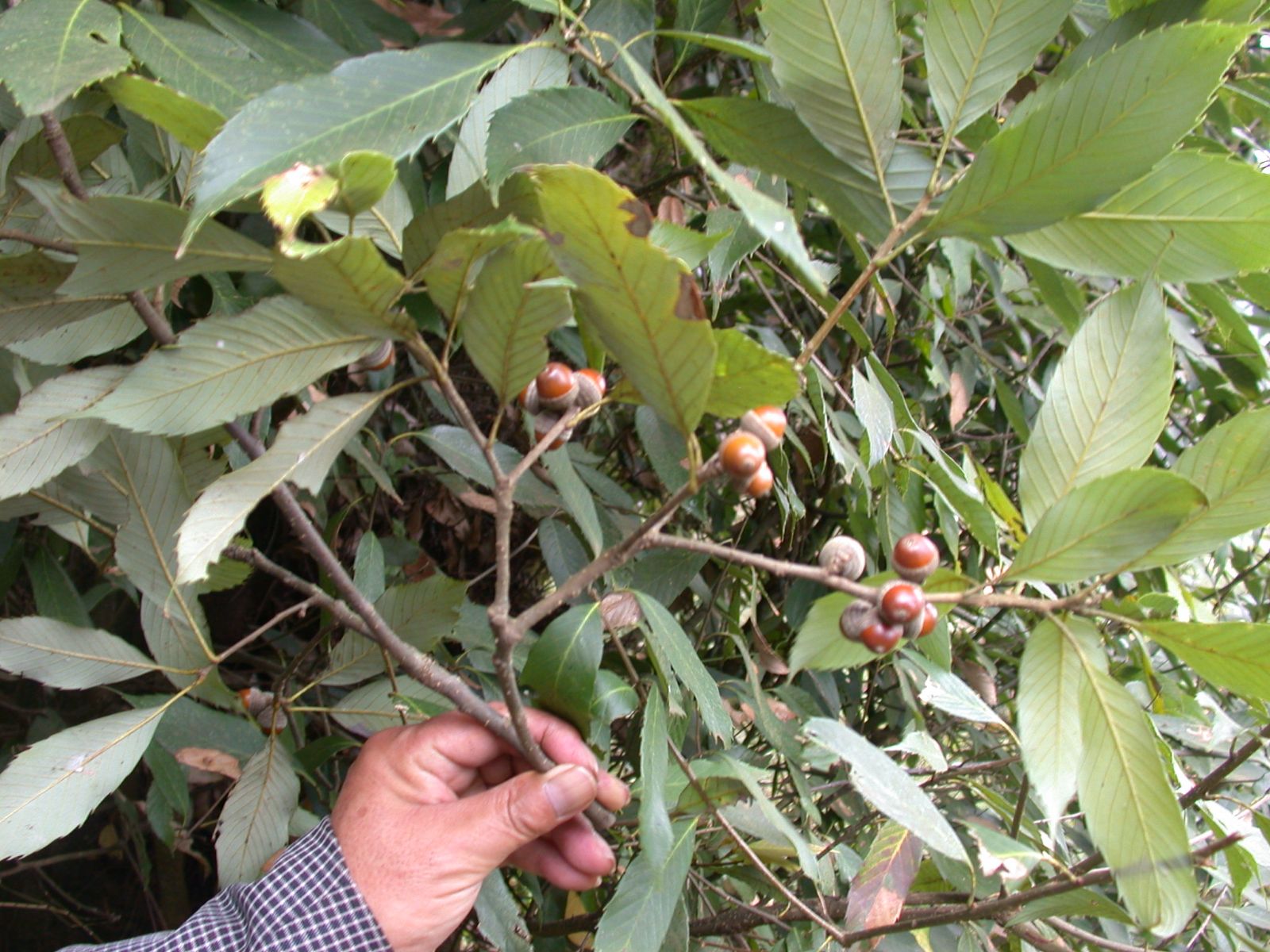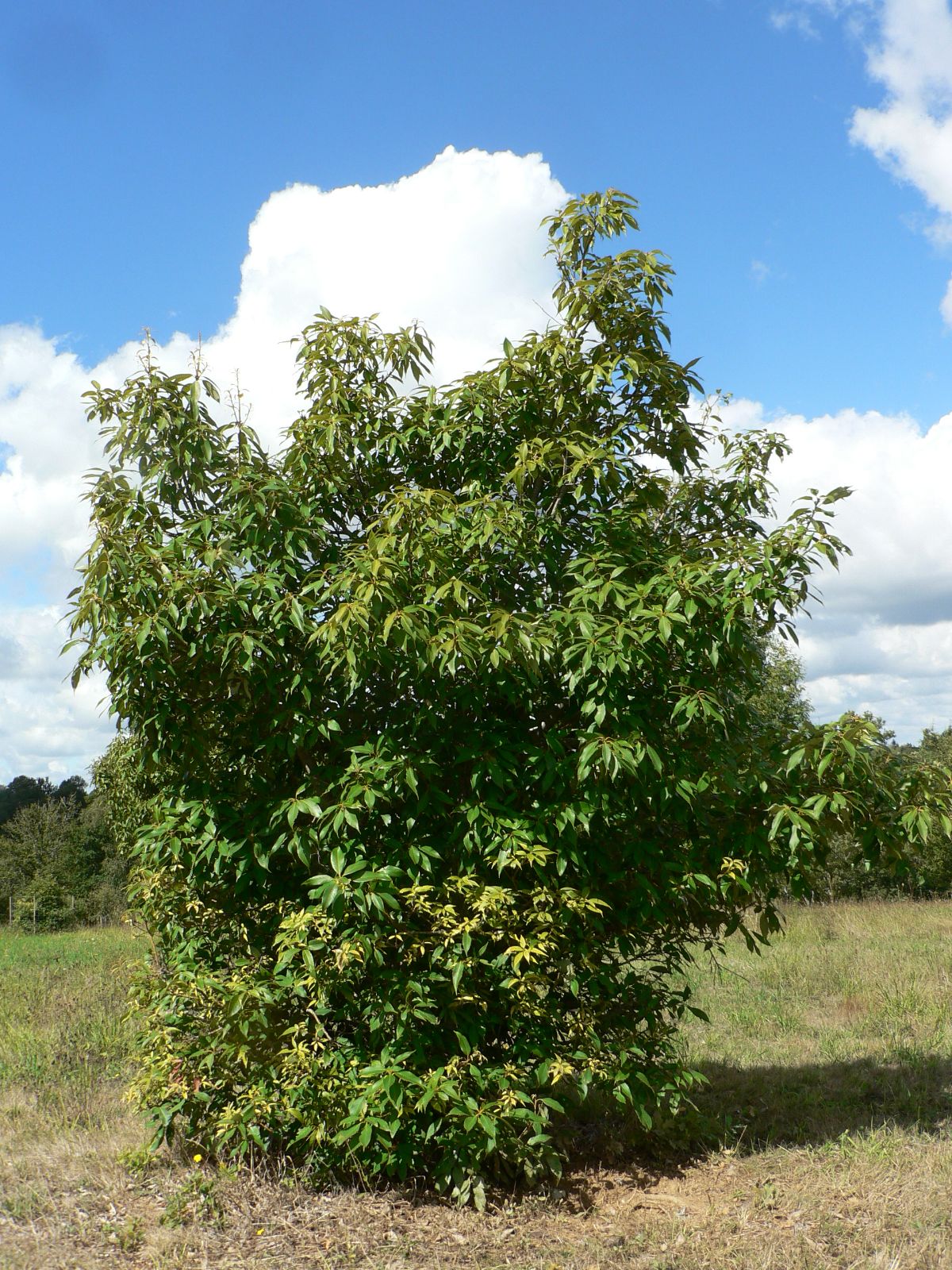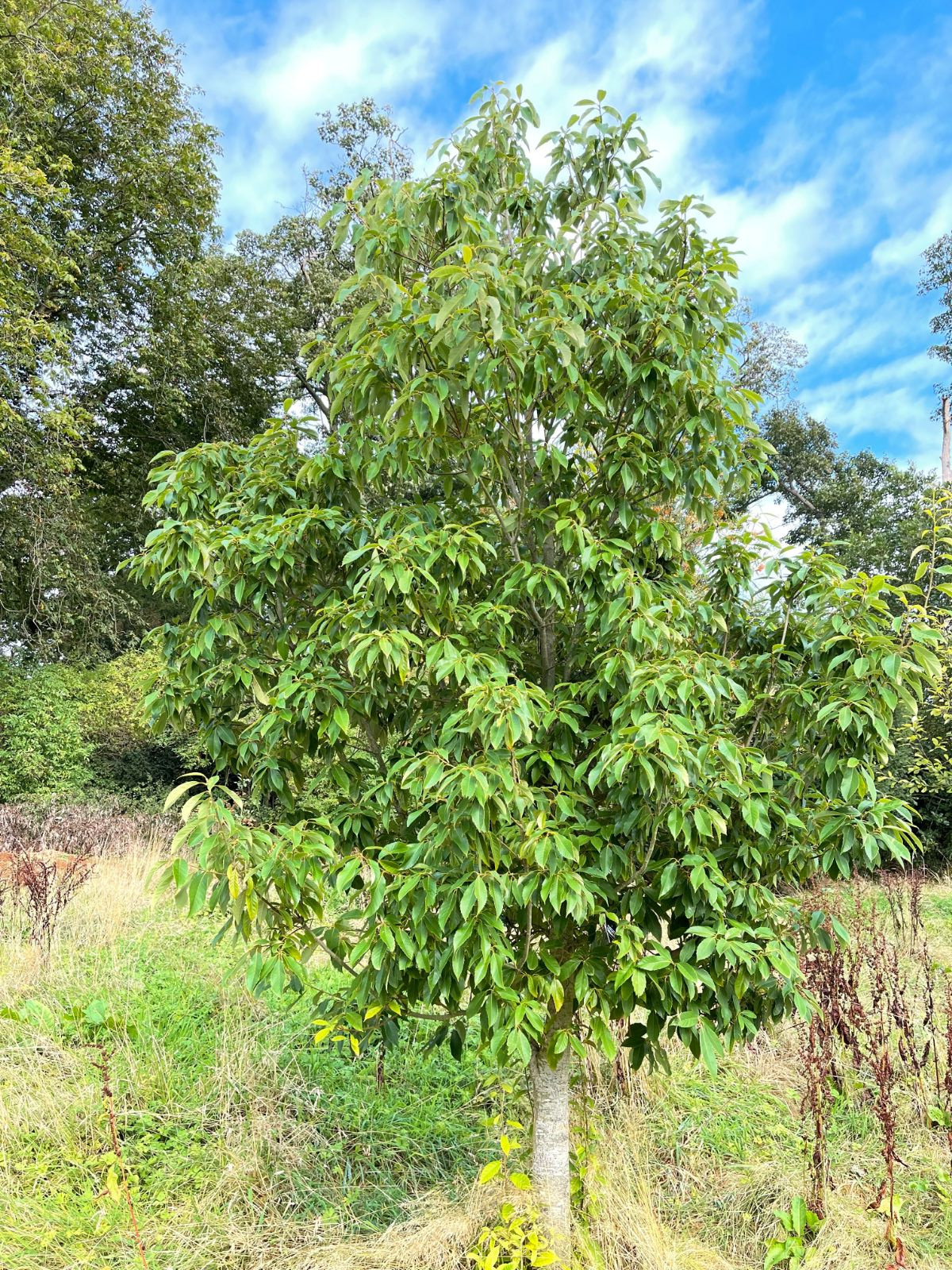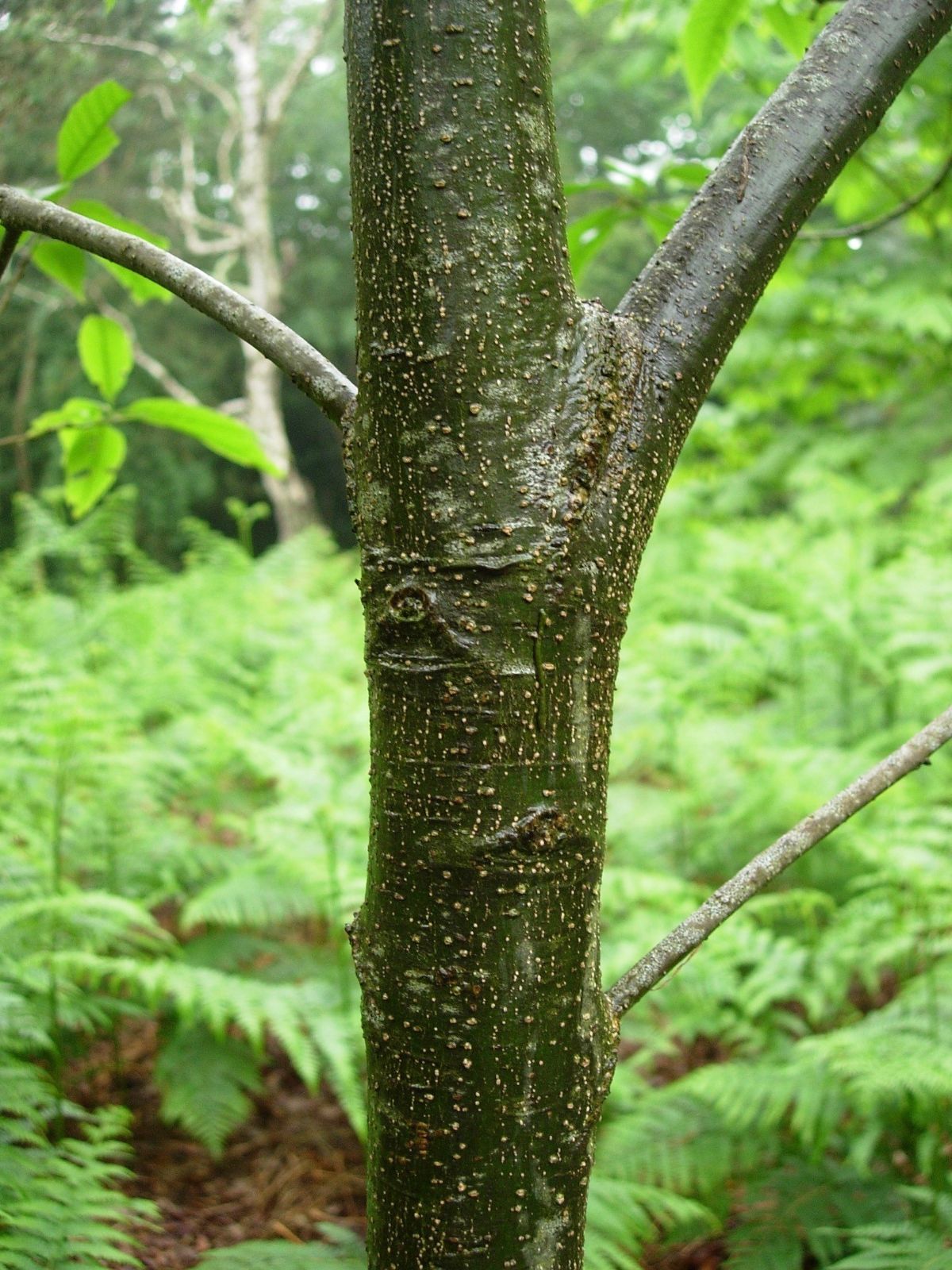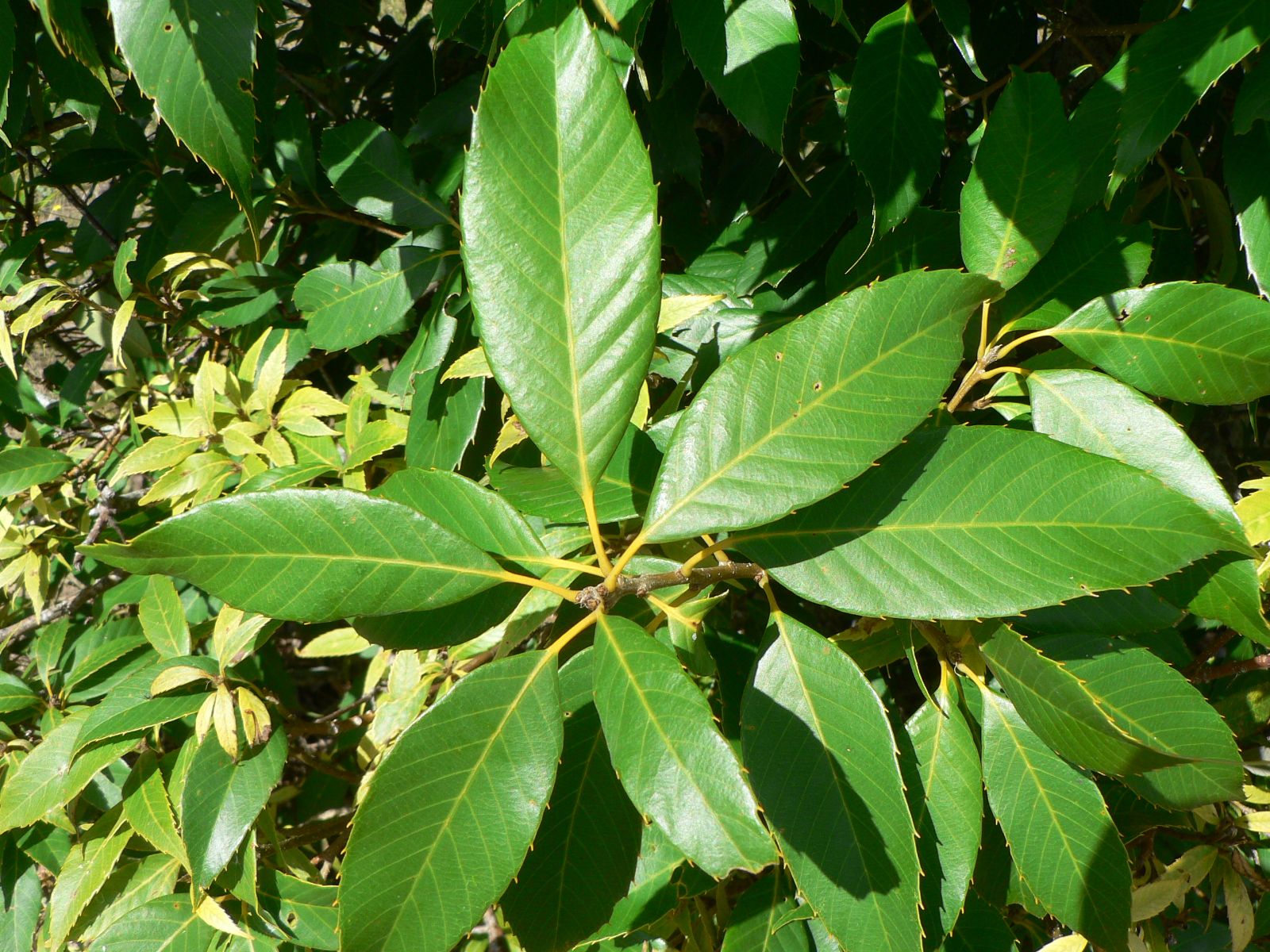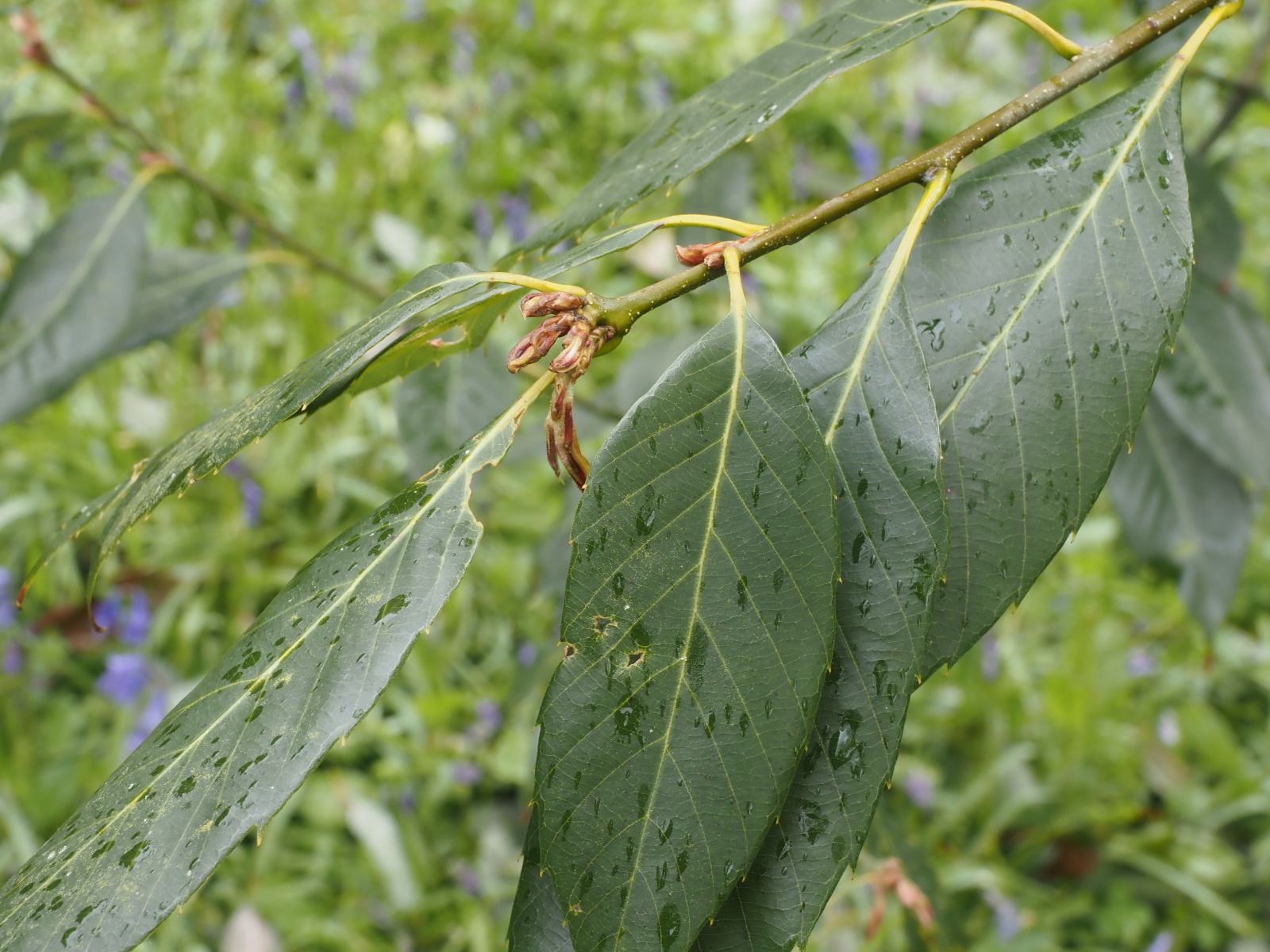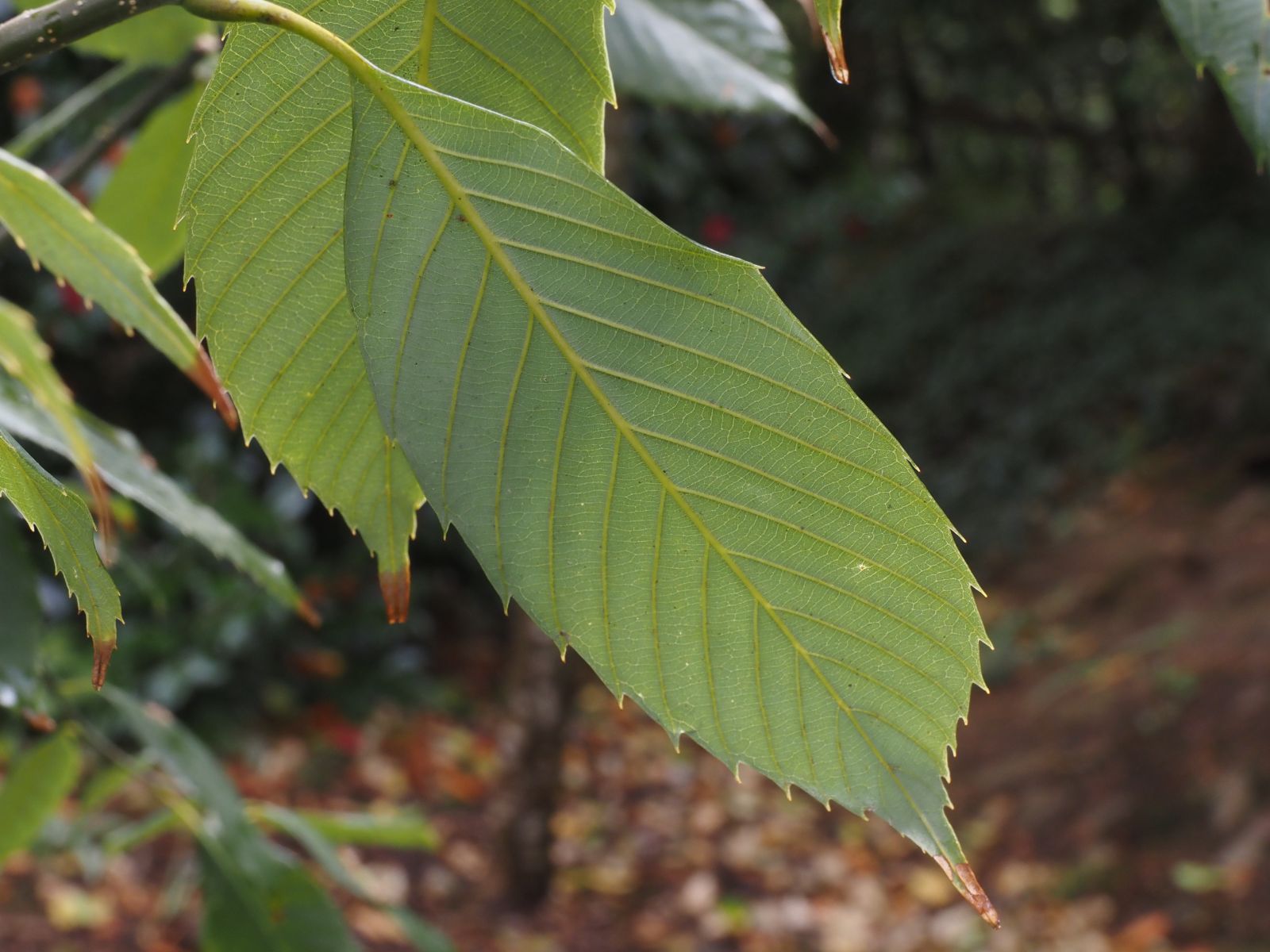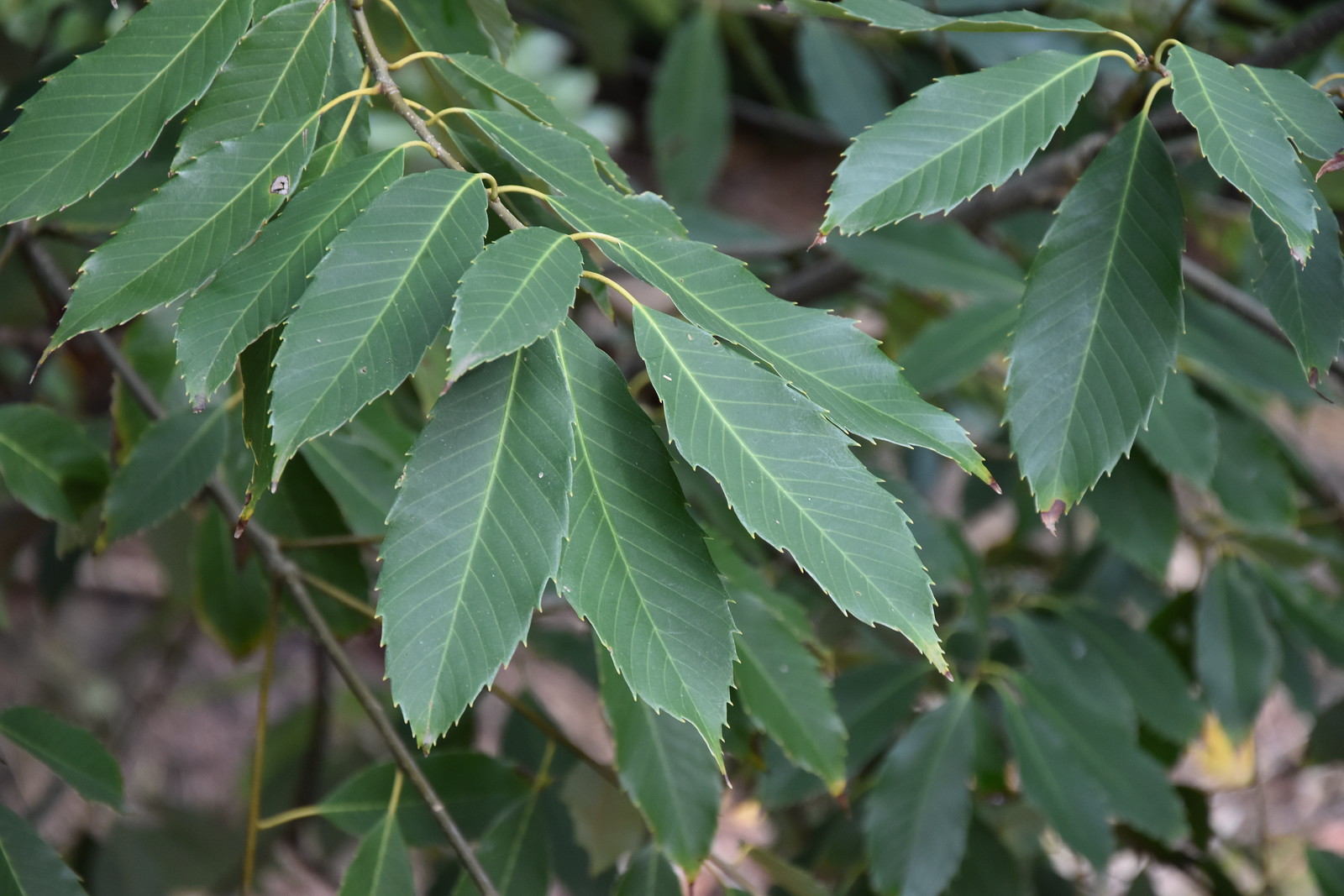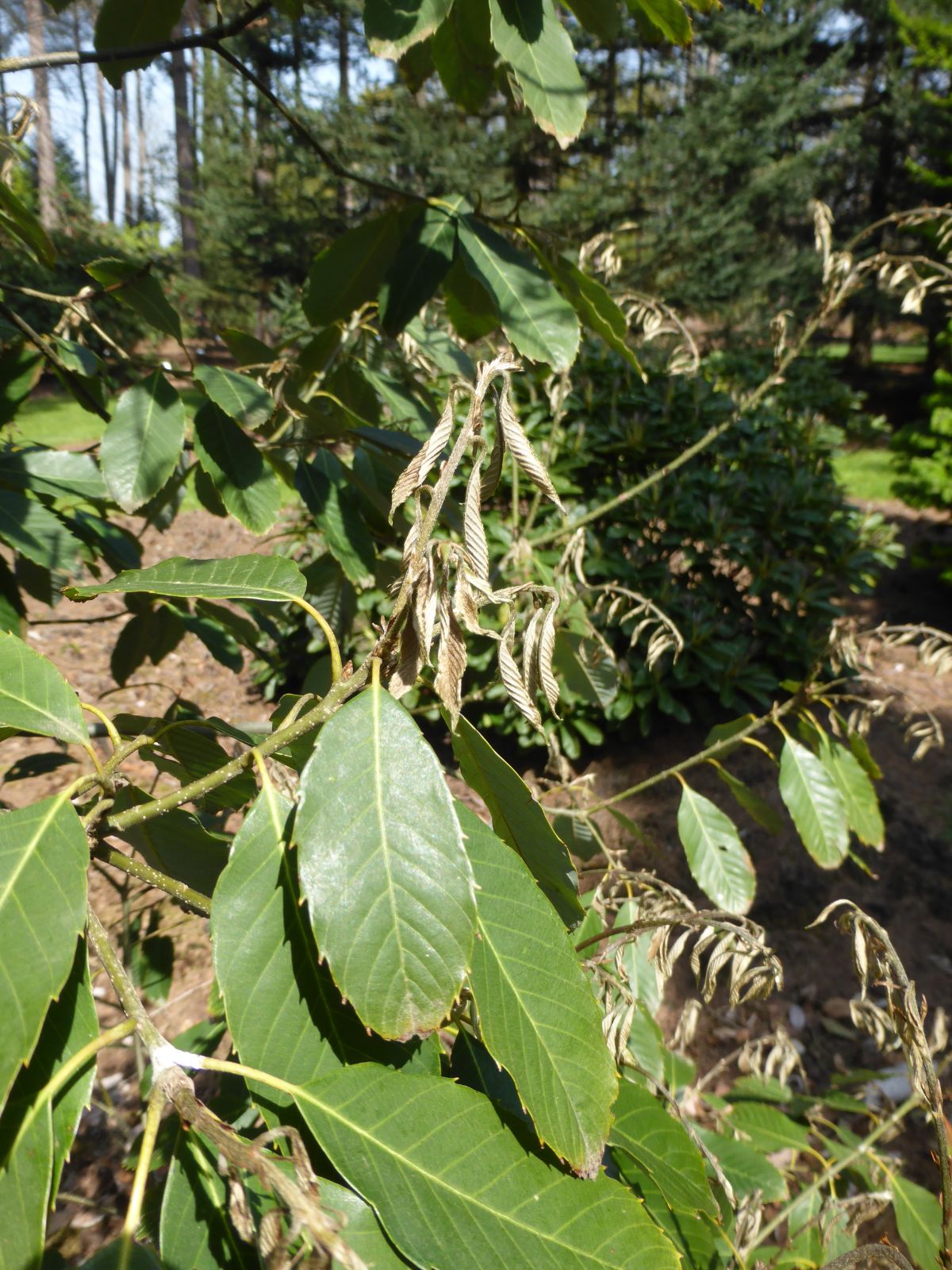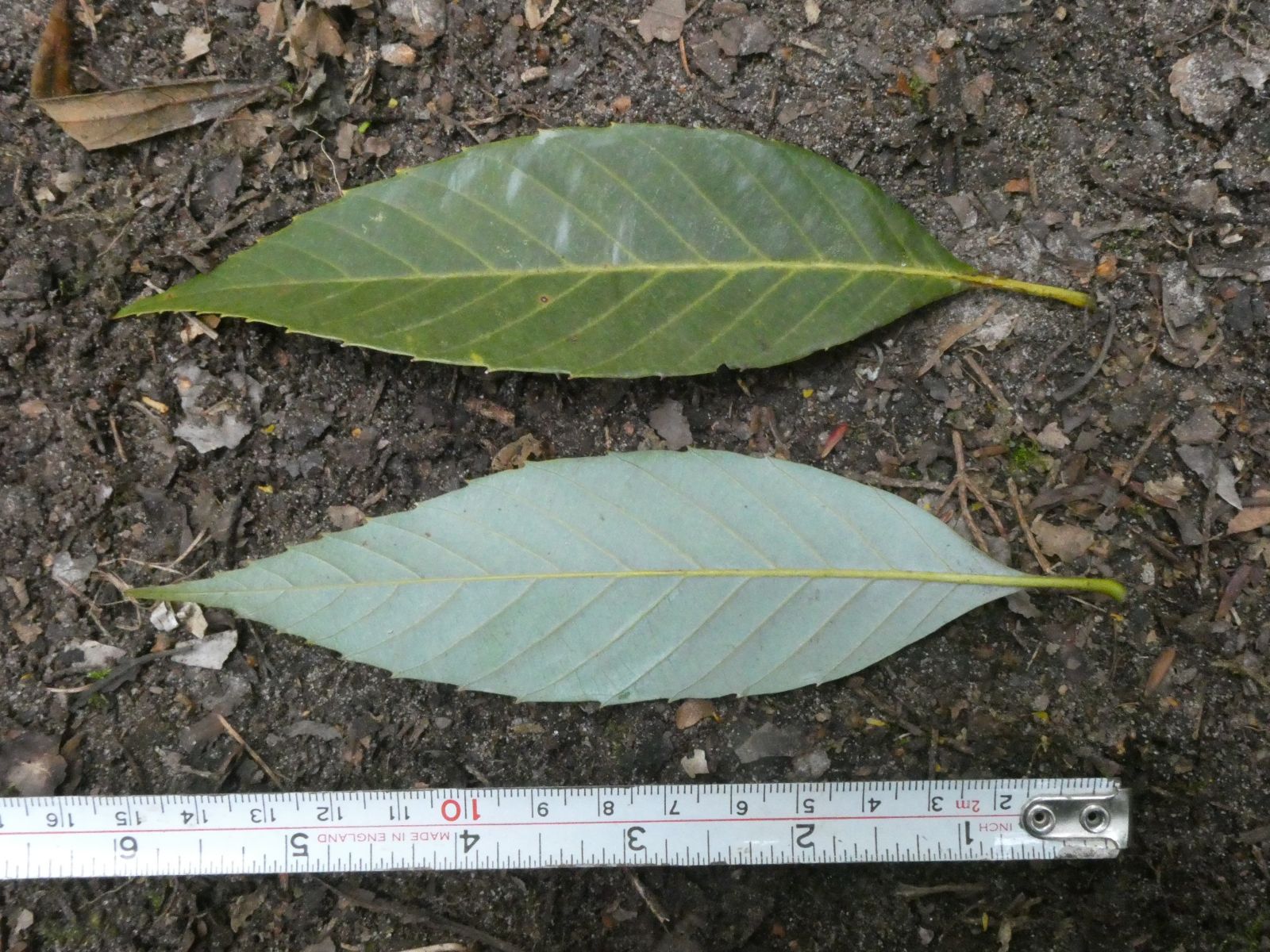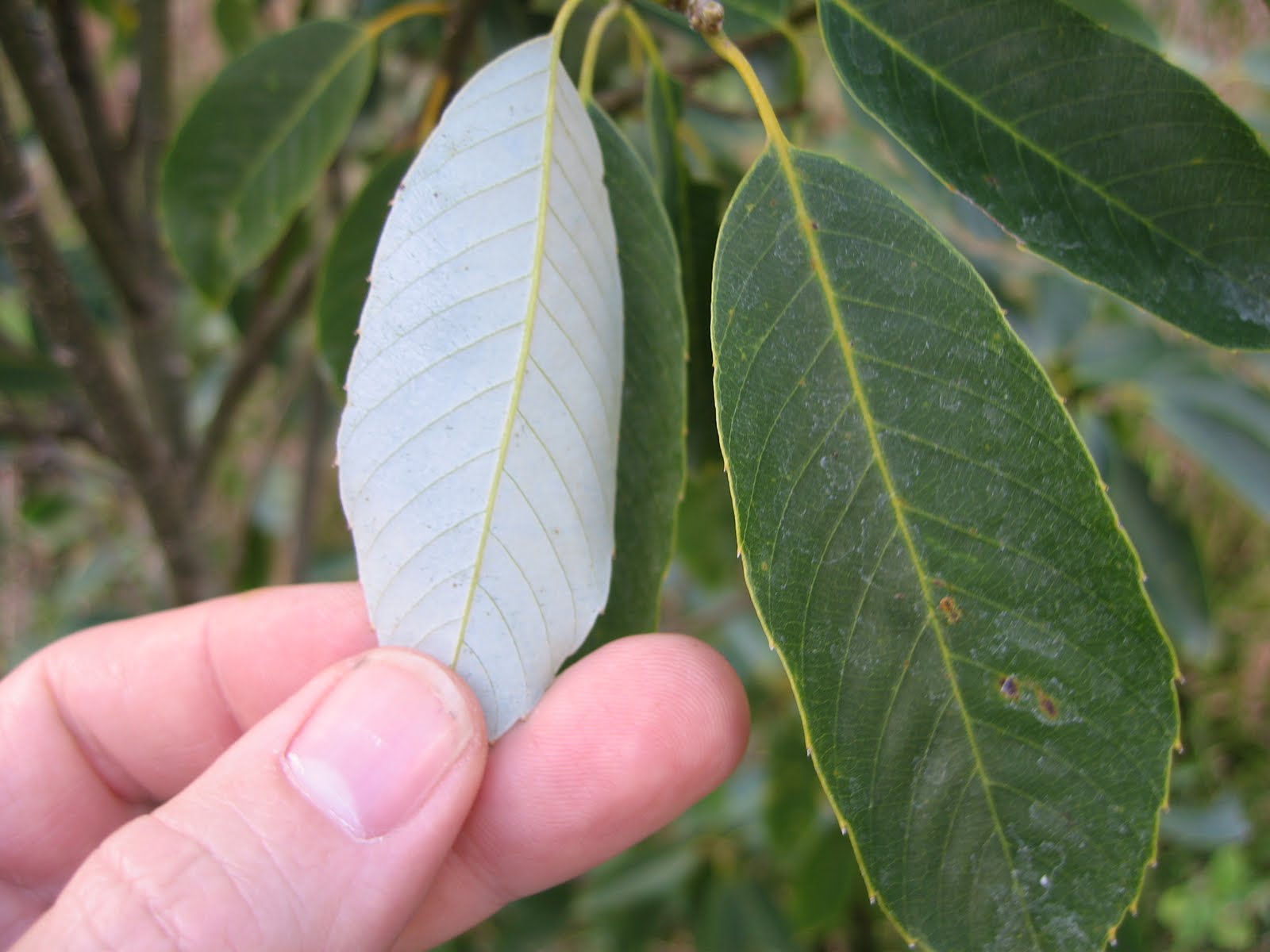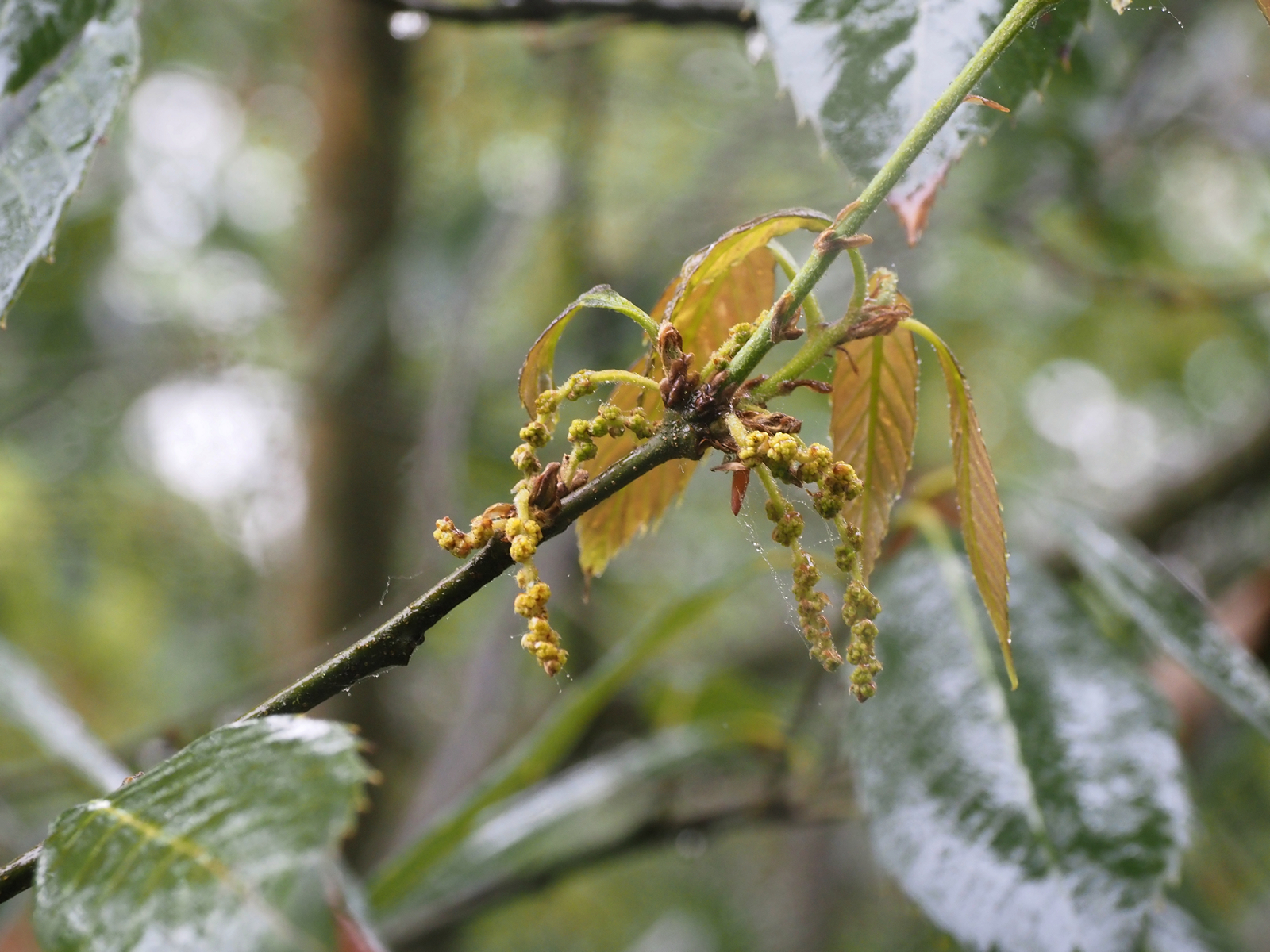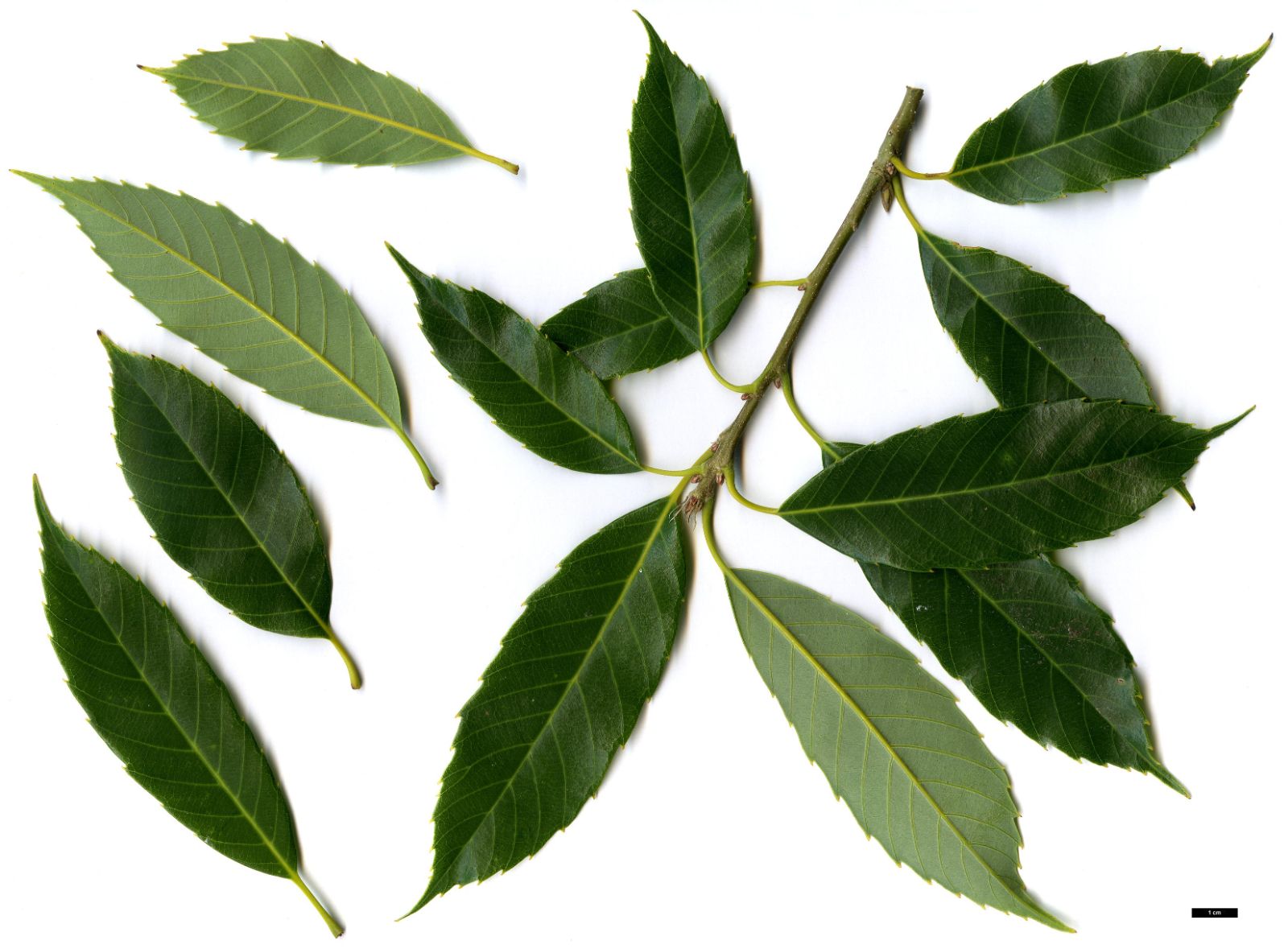Quercus kiukiangensis
Sponsor
Kindly sponsored by
The Trees and Shrubs Online Oak Consortium
Credits
Allen Coombes & Roderick Cameron (2022)
Recommended citation
Coombes, A. & Cameron, R. (2022), 'Quercus kiukiangensis' from the website Trees and Shrubs Online (treesandshrubsonline.
Genus
- Quercus
- Subgen. Cerris, Sect. Cyclobalanopsis
Common Names
- 俅江青冈 (qiu jiang qing gang)
Synonyms
- Cyclobalanopsis kiukiangensis Y.T. Chang
Other taxa in genus
- Quercus acerifolia
- Quercus acherdophylla
- Quercus acrodonta
- Quercus acuta
- Quercus acutifolia
- Quercus acutissima
- Quercus afares
- Quercus affinis
- Quercus agrifolia
- Quercus alba
- Quercus aliena
- Quercus alnifolia
- Quercus aquifolioides
- Quercus arizonica
- Quercus arkansana
- Quercus aucheri
- Quercus augustini
- Quercus austrina
- Quercus × auzendei
- Quercus baloot
- Quercus bambusifolia
- Quercus baronii
- Quercus bicolor
- Quercus brantii
- Quercus buckleyi
- Quercus canariensis
- Quercus canbyi
- Quercus candicans
- Quercus castanea
- Quercus castaneifolia
- Quercus cerris
- Quercus chenii
- Quercus chrysolepis
- Quercus coccifera
- Quercus cocciferoides
- Quercus coccinea
- Quercus conspersa
- Quercus crassifolia
- Quercus crassipes
- Quercus delavayi
- Quercus dentata
- Quercus deserticola
- Quercus dolicholepis
- Quercus douglasii
- Quercus dumosa
- Quercus durifolia
- Quercus eduardii
- Quercus ellipsoidalis
- Quercus emoryi
- Quercus engelmannii
- Quercus engleriana
- Quercus euboica
- Quercus eugeniifolia
- Quercus fabri
- Quercus faginea
- Quercus falcata
- Quercus floribunda
- Quercus frainetto
- Quercus franchetii
- Quercus fruticosa
- Quercus fusiformis
- Quercus gambelii
- Quercus garryana
- Quercus geminata
- Quercus georgiana
- Quercus germana
- Quercus gilliana
- Quercus gilva
- Quercus glabrescens
- Quercus glauca
- Quercus graciliformis
- Quercus gravesii
- Quercus griffithii
- Quercus grisea
- Quercus guyavifolia
- Quercus hartwissiana
- Quercus hemisphaerica
- Quercus × hispanica
- Quercus hondae
- Quercus hypargyrea
- Quercus hypoleucoides
- Quercus ilex
- Quercus ilicifolia
- Quercus imbricaria
- Quercus incana
- Quercus infectoria
- Quercus insignis
- Quercus ithaburensis
- Quercus kelloggii
- Quercus × kewensis
- Quercus laceyi
- Quercus laevis
- Quercus lamellosa
- Quercus lanata
- Quercus lancifolia
- Quercus laurifolia
- Quercus laurina
- Quercus × leana
- Quercus leucotrichophora
- Quercus × libanerris
- Quercus libani
- Quercus lobata
- Quercus lobbii
- Quercus lodicosa
- Quercus longinux
- Quercus longispica
- Quercus look
- Quercus × ludoviciana
- Quercus macranthera
- Quercus macrocalyx
- Quercus macrocarpa
- Quercus macrolepis
- Quercus marilandica
- Quercus mexicana
- Quercus michauxii
- Quercus mongolica
- Quercus monimotricha
- Quercus montana
- Quercus morii
- Quercus muehlenbergii
- Quercus myrsinifolia
- Quercus myrtifolia
- Quercus nigra
- Quercus × numidica
- Quercus oblongifolia
- Quercus obtusata
- Quercus oglethorpensis
- Quercus oxyodon
- Quercus pagoda
- Quercus palmeri
- Quercus palustris
- Quercus pannosa
- Quercus parvula
- Quercus petraea
- Quercus phellos
- Quercus phillyreoides
- Quercus planipocula
- Quercus poilanei
- Quercus polymorpha
- Quercus pontica
- Quercus prinoides
- Quercus pubescens
- Quercus pyrenaica
- Quercus rehderiana
- Quercus reticulata
- Quercus robur
- Quercus rotundifolia
- Quercus rubra
- Quercus rugosa
- Quercus rysophylla
- Quercus sadleriana
- Quercus salicina
- Quercus sartorii
- Quercus × schneideri
- Quercus schottkyana
- Quercus semecarpifolia
- Quercus senescens
- Quercus serrata
- Quercus sessilifolia
- Quercus setulosa
- Quercus shumardii
- Quercus sinuata
- Quercus spinosa
- Quercus stellata
- Quercus stenophylloides
- Quercus suber
- Quercus subspathulata
- Quercus tarokoensis
- Quercus tatakaensis
- Quercus texana
- Quercus tomentella
- Quercus trojana
- Quercus tungmaiensis
- Quercus turbinella
- Quercus × turneri
- Quercus undulata
- Quercus utahensis
- Quercus utilis
- Quercus uxoris
- Quercus variabilis
- Quercus velutina
- Quercus virginiana
- Quercus vulcanica
- Quercus warburgii
- Quercus wislizenii
- Quercus xalapensis
Tree to 30 m tall. Young shoots stout, densely hairy when young, becoming glabrous. Leaves evergreen, leathery, elliptic-oblong, to 18 × 8.5 cm, tapered to rounded at the base, pointed to tapered, sometimes abruptly, at the apex, with 10–13 prominent veins on each side of the midrib. Margin with conspicuous teeth, especially towards the apex, toothed throughout except the basal ¼ in some of the young plants in cultivation. Leaves are bronze when young, becoming glossy dark green above, blue-green to glaucous beneath and glabrous on both sides when mature. Petiole to 2.5 cm long, glabrous. Infructescence 3.5 cm. Cupule saucer-shaped to hemispherical, to 1.5 × 2.2 cm, with 6–9 rings of scales, the basal ones toothed. Acorn globose to conical, to 3 × 1.7 cm, about ½ enclosed in the cup and ripening the first year. (Huang et al. 1999).
Distribution China Xizang, NW Yunnan
Habitat Mountain forests at 1300–2000 m.
USDA Hardiness Zone 7
RHS Hardiness Rating H5
Conservation status Endangered (EN)
Introduced by Allen Coombes in 2004 from Yunnan (CMBS 900) and originally believed to be Q. argyrotricha, which is probably not in cultivation. All the following trees belong to this collection.
Caerhays 4 m (2016), Congrove Arboretum 3 m (2014), Penrice Castle, four trees, the larger 4 m × 10 cm (2018), RHS Wisley 2.2 m (2010), Thenford House 3.5 m × 9 cm and 4 m × 4 cm (2019), Tregrehan 4.5 m × 8 cm (2014), Wynkcoombe Hill 4.25 m × 5 cm (2020) (The Tree Register 2021; N. Smith pers. comm. 2020). At Chevithorne Barton, Devon, there are three trees, the largest about 8 m × 15 cm in 2021 (J. MacEwen pers. comm.). A plant at Sir Harold Hillier Gardens was 4.7 m × 4.5 cm at 1.3 m in 2021 (B. Clarke pers. comm.). At Arboretum des Pouyouleix, France, it was 3.5 m × 6 cm in 2020 (B. Chassé, pers. comm.). There are also plants at Arboretum des Grandes Bruyères, France and Iturraran Botanic Garden, Spain. Two plants at Arboretum Wespelaar, Belgium are described as healthy and beautiful although leaves can be lost in cold winters (P. de Spoelberch pers. comm. 2021).
It was named after Jiujiang (previously Kiukiang), Yunnan. The local name in China can be translated as ‘Jiujiang evergreen oak.’

